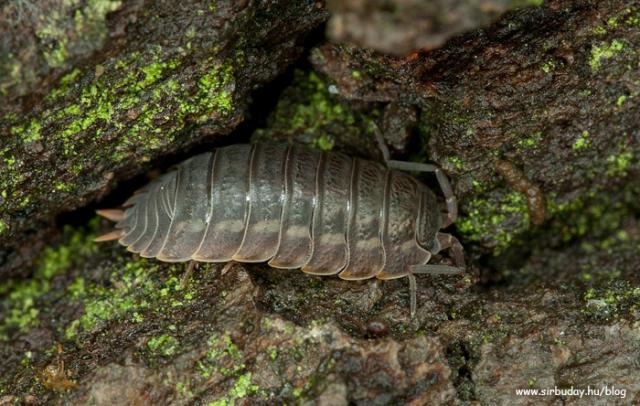Taxonavigation:
Regnum: Animalia
Phylum: Arthropoda
Subphylum: Crustacea
Classis: Malacostraca
Subclassis: Eumalacostraca
Superordo: Peracarida
Ordo: Isopoda
Cladus: Scutocoxifera
Subordo: Oniscidea
Infraordo: Ligiamorpha
Family: Trachelipodidae
Genus: Trachelipus
Species: Trachelipus nodulosus
Habitat:
This genus lives in Carpathian – most in Romania, but also in Poland, Czech Republic and Slovakia: natural/near-natural forests, rocky mountans and highlands. It is very rare in Hungary.
Morphology:
It looks like a T. ratzeburgii and a T. rathkii had been mixed. Great woodlouse, the body length is about 2 cm. It’s colour is brown-orange, the end of membrans are light-brown-orange.
Nutrition:
It feed dead vegetable matters (dead fallen leaves, fungus)
Function in ecology:
This genus –like the others- is a member of the degrade macro invertebrate guild. The main function is int he comminution.
Utilizing by human:
The genus as a degrade fills a part of ecosystem’s metabolism.
http://hu.wikipedia.org/wiki/Sz%C3%A1razf%C3%B6ldi_%C3%A1szkar%C3%A1kok
Schmalfuss, H. (2003): World catalog of terrestrial isopods (Isopoda: Oniscidea). Stuttg Beitr Naturk, Serie A, 654: 341.
Schmidt, C. (1997): Revision of the European species of thegenus Trachelipus Budde-Lund, 1908 (Crustacea: Isopoda: Oniscidea). Zool J Linn Soc 121: 129-244.
Vilisics, F., Nagy, A., Sólymos, P., Farkas, R., Kemencei, Z., Páll-Gergely, B., Kisfali, M., Hornung, E. (2008): Data on the terrestrial Isopoda fauna of the Alsó-hegy, Aggtelek National Park, Hungary. Folia Faun Slov 13(4): 19-2.
